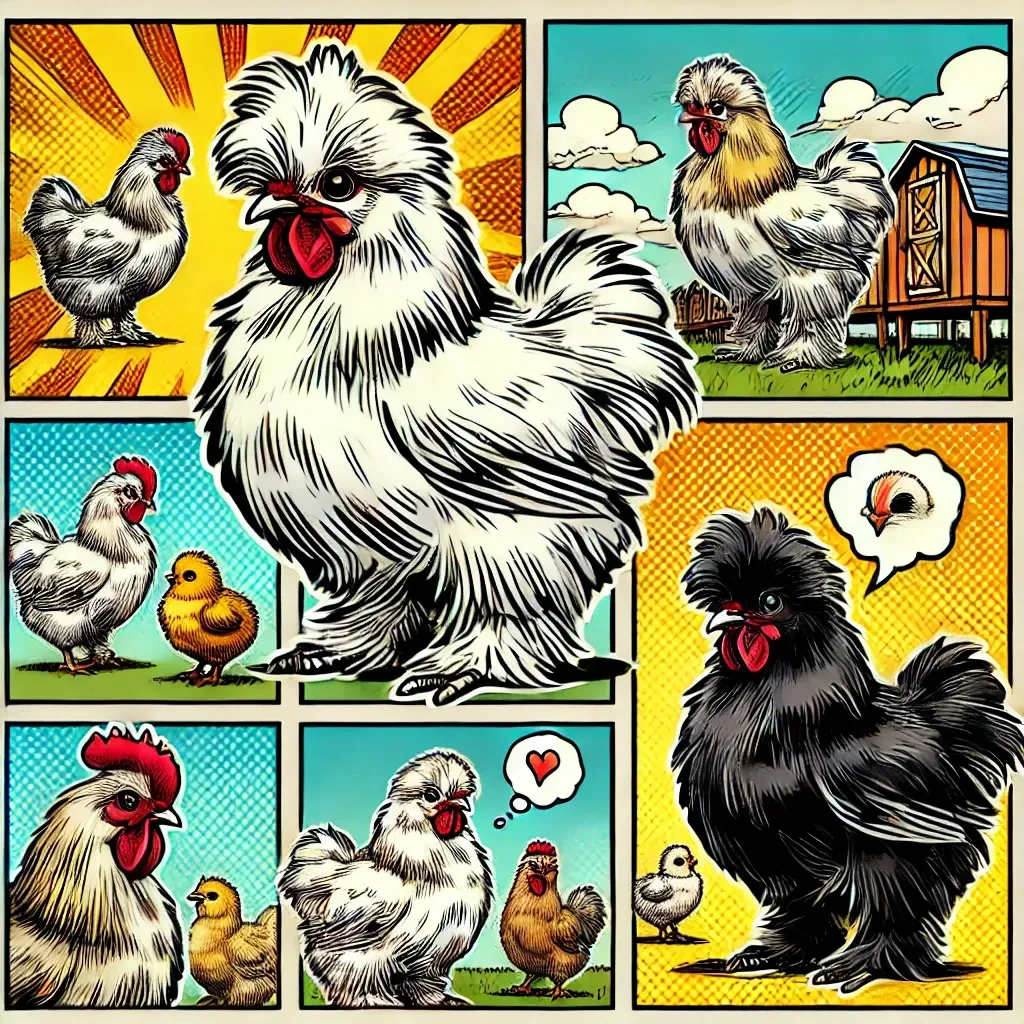
Raising Silkies
Silkie Chickens: The Fluffy Delight of the Homestead
Silkie chickens are one of the most unique and beloved breeds among backyard poultry enthusiasts. Their distinct appearance and gentle nature make them a favorite for both experienced and novice chicken keepers. This guide will provide you with everything you need to know about raising Silkie chickens on your homestead.
1. Origin and History
Silkie chickens have a rich history that dates back to ancient China, where they were first documented. They were brought to Europe by traders traveling along the Silk Road, which is believed to be the origin of their name. Marco Polo even mentioned a "furry chicken" in his travels, likely referring to Silkies. Their exotic appearance and friendly nature quickly made them popular worldwide.
2. Physical Characteristics
Silkies are easily recognizable by their fluffy plumage, which feels more like fur than feathers. This unique feature is due to the lack of barbs on their feathers, giving them a soft, silky appearance. Other distinctive traits include:
Black Skin and Bones: Unlike most chickens, Silkies have black skin and bones, which is a result of a genetic mutation.
Blue Earlobes: Their bright blue earlobes add to their unique look.
Five Toes: Most chicken breeds have four toes, but Silkies have five.
Feathered Legs and Feet: Their legs and feet are covered with feathers, adding to their fluffy appearance.
Docile Nature: Silkies are known for their calm and friendly temperament, making them great pets.
3. Silkie Varieties
Silkies come in both bearded and non-bearded varieties. Bearded Silkies have an extra muff of feathers around their faces, giving them an even fluffier appearance. They also come in several colors, including white, black, blue, buff, and partridge.
4. Caring for Silkie Chickens
Silkies are relatively low-maintenance, but their unique feathers require some special care:
Housing: Provide a clean, dry coop with plenty of ventilation. Because their feathers are not waterproof, Silkies should be kept out of the rain to prevent chilling.
Diet: Feed Silkies a balanced diet of high-quality poultry feed, supplemented with fresh fruits, vegetables, and occasional treats. Ensure they always have access to fresh water.
Grooming: Regularly check their feathers, especially around the face and feet, for cleanliness and parasites. You may need to trim their feathers occasionally to prevent matting and to help them see better.
5. Health and Wellness
Silkies are generally healthy birds, but their fluffy feathers can make them more susceptible to mites and lice. Regular health checks and maintaining a clean coop will help keep them healthy. They are also known for their broodiness, meaning they frequently want to sit on eggs to hatch them. If you don’t want them to hatch eggs, be prepared to manage their broodiness.
6. Egg Laying and Broodiness
Silkies are not prolific egg layers compared to other breeds, typically producing around 100-120 small, cream-colored eggs per year. However, they are renowned for their broodiness and make excellent mothers. If you want to hatch chicks, Silkies are a great choice.
7. Silkies as Pets
Their friendly and gentle nature makes Silkies wonderful pets, especially for families with children. They enjoy human interaction and can even be trained to enjoy being held and cuddled. Their calm demeanor also makes them a good choice for therapy animals.
Conclusion
Silkie chickens are a delightful addition to any homestead. Their unique appearance, friendly nature, and excellent mothering abilities make them stand out among other chicken breeds. Whether you're looking for a pet, a broody hen, or just want to add some fluffy charm to your flock, Silkies are an excellent choice.
For more information on raising chickens and other homesteading tips, visit www.krisandlarry.com.
About Us
We are a large, Christian, homeschooling homesteading family from Chino Valley, Arizona. (2 parents - Kris and Larry, 8 kids, some not so little any more and 3 spouses of the kids)
We have a fun Youtube channel, a blog, and a homestead shop with goat milk soap and lotion, signs, jewelry & more.
Copyright© 2025 KrisandLarry - All Rights Reserved.


Facebook
Instagram
Youtube
TikTok